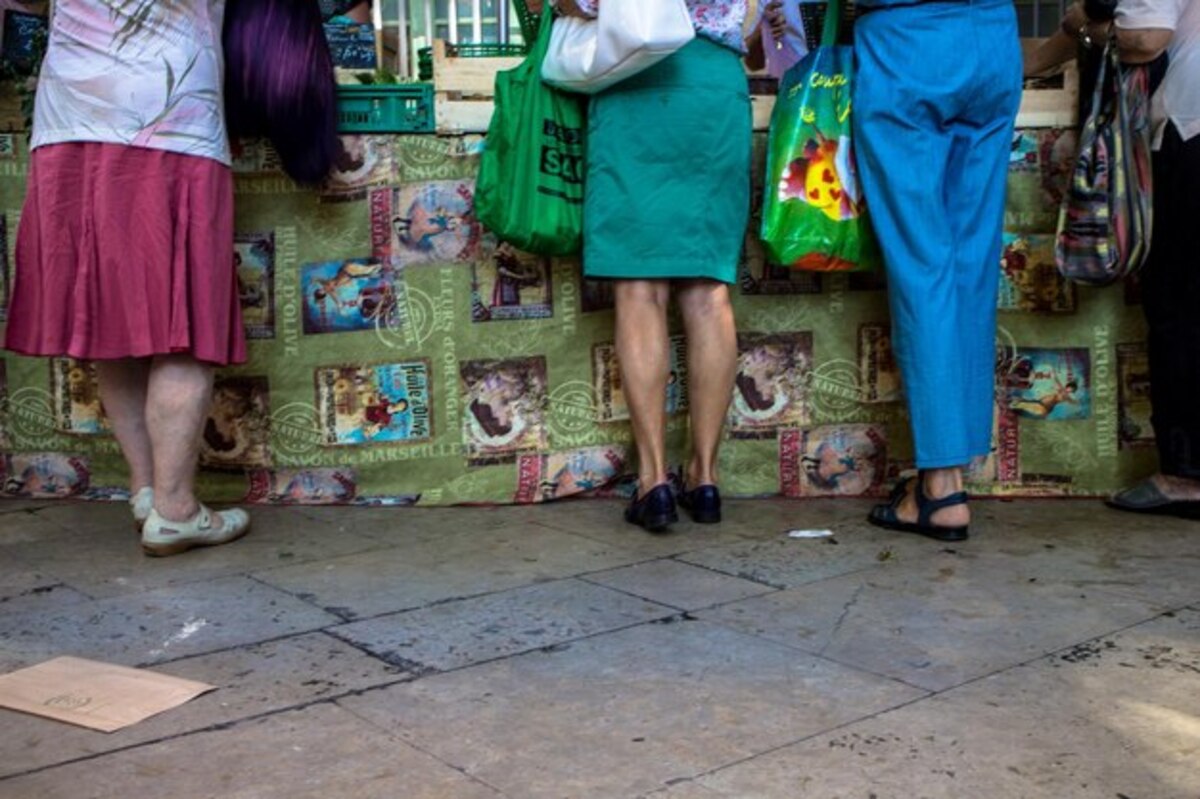Hidden potential: how culture drives added value in emerging neighborhoods

Hidden potential: how culture drives appreciation in emerging neighborhoods The transformation of a neighborhood goes beyond its bricks and streets; it is a cultural symphony that elevates its appreciation. In this article, we will explore how cultural dynamics – from art to gastronomy – are bringing life to emerging areas in Costa Rica. Culture not only enriches the living experience, but also acts as a magnet for investment and development. Discover how the hidden potential of these neighborhoods could be the key to securing your financial future.
1. The relationship between culture and urban development
The relationship between culture and urban development is intrinsic and multifaceted. As a neighborhood begins to adopt and promote its cultural identity, spaces are generated that foster creativity and social interaction. The presence of art galleries, theaters, cultural festivals, and local markets not only enrich the daily lives of residents but also attract visitors and potential investors. This flow of people creates a dynamic where local traditions intertwine with new influences, thus driving urban development in a sustainable and diverse manner.
Additionally, culture acts as a catalyst to revitalize areas that might otherwise be perceived as marginal or declining. When artists and entrepreneurs invest in these emerging neighborhoods, they create a sense of community that invites others to participate in their transformation. This phenomenon not only improves the physical environment – through the restoration of historic buildings or the creation of vibrant public spaces – but also increases the area's appeal for new residents and investors. The resulting added value is the tangible reflection of the transformative power of culture in urban space, demonstrating that investing in culture is betting on a more prosperous future for all.
2. How cultural spaces enhance real estate value
Cultural spaces, such as art galleries, theaters, and community centers, play a fundamental role in the enhancement of emerging neighborhoods. These places not only provide opportunities for recreation and education but also attract artists and creatives seeking a dynamic environment to develop their talent. The presence of cultural activities can transform a neglected area into a vibrant meeting point, generating a constant flow of visitors and residents interested in enjoying what the neighborhood has to offer. This influx directly contributes to the increase in real estate value, as properties near these spaces become more desirable.
Additionally, cultural spaces foster a sense of community and belonging among the neighborhood's residents. Events such as food fairs, art exhibitions, or local festivals create social ties and promote a collective identity that attracts both new residents and investors. This vibrant environment not only enhances the quality of life for those already living in the area but also projects a positive image outward. As more people discover these unique characteristics of the neighborhood, the demand for properties in the area increases, further boosting their value. In this context, investing in real estate near cultural spaces becomes a smart strategy for ensuring a solid financial future.
3. Artistic initiatives that transform communities
Artistic initiatives have the power to transform the identity of a neighborhood, becoming catalysts for social and economic development. Community projects that promote local art, such as collaborative murals or cultural festivals, not only beautify the urban environment but also foster a sense of belonging among residents. By involving local artists and the community in their execution, these initiatives create inclusive spaces where diverse cultural expressions are celebrated. This artistic revival attracts both visitors and investors interested in contributing to the growth of the area, thereby increasing the value of the neighborhood.
Additionally, these artistic manifestations can serve as a platform to highlight social issues and promote dialogue among different sectors of the community. For example, community theaters or photography exhibitions can address relevant topics that affect the residents, generating awareness and unity among them. In this context, culture becomes a powerful tool that not only physically transforms the urban space but also strengthens social and economic networks within the neighborhood. Thus, by investing in local artistic initiatives, a vibrant ecosystem is cultivated that enhances the quality of life and attracts new opportunities for all its residents.
4. Local cuisine: the new attraction of emerging neighborhoods
Local cuisine has become a powerful attraction that transforms the perception of emerging neighborhoods. As new restaurants, cafés, and markets emerge, these spaces not only offer delicious dishes but also tell stories about the cultural identity of the place. The blend of traditional flavors with contemporary influences creates a unique culinary experience that appeals to both residents and visitors, thus turning these neighborhoods into culinary destinations in their own right. This culinary revitalization contributes to added value by fostering a vibrant and diverse environment that invites tourism and new investments.
Additionally, the rise of local cuisine drives a circular economy within the community. Local chefs and entrepreneurs often collaborate with farmers and regional producers, which not only supports the local economy but also promotes sustainable practices. This focus on fresh, high-quality ingredients resonates with a growing social awareness about the origin of food, attracting more engaged consumers. By strengthening these community connections, emerging neighborhoods become dynamic centers where culinary culture acts as a driver of economic and social development, further elevating their real estate value and overall appeal.
5. The role of cultural tourism in added value
Cultural tourism stands as a fundamental element in the valuation of emerging neighborhoods, serving as a bridge that connects residents with visitors eager for authentic experiences. This type of tourism not only attracts travelers interested in local history and traditions but also fosters the creation of spaces where art and gastronomy intertwine, generating a unique offering that resonates with both locals and outsiders. As these neighborhoods become cultural destinations, their appeal increases, thus driving demand for properties and services, which directly translates into an increase in property value. Moreover, the impact of cultural tourism goes beyond the economic realm; it promotes a renewed sense of community and belonging among residents. By integrating cultural activities and festivals that highlight local customs, the identity of the neighborhood is strengthened, creating an environment conducive to social development. This cultural revitalization not only improves the quality of life for its residents but also attracts investments in infrastructure and local businesses. Consequently, the role of cultural tourism is twofold: it acts as an economic catalyst while nourishing the social fabric of these emerging neighborhoods, thus consolidating their long-term appeal.
6. Testimonials from successful local entrepreneurs
Testimonials from local entrepreneurs reveal how culture has become the driving force behind their businesses and, in turn, transforms the neighborhoods where they operate. Many of them have found in the authenticity of their environment an inexhaustible source of inspiration. For example, a small art gallery in an emerging neighborhood not only showcases local works but also organizes workshops and events that attract both visitors and residents. These initiatives not only promote local talent but also create a domino effect that revitalizes the area's economy, thereby increasing its value.
Moreover, entrepreneurs emphasize how the fusion of cultural traditions with modern trends creates unique experiences that capture the attention of both residents and tourists. A restaurant that combines ancestral recipes with a contemporary approach can be a vibrant meeting place for the community. These stories reflect a shared vision: when investment is made in culture and creativity, a sense of belonging is built that not only beautifies the neighborhood but also increases its economic value. The story of individual success intertwines with collective growth, highlighting the crucial role that culture plays in the sustainable development of emerging communities.
7. Community events: building identity and value
Community events are one of the most powerful manifestations of local culture, acting as catalysts for the construction of identity and social cohesion in emerging neighborhoods. By bringing residents together around activities such as fairs, festivals, and workshops, these events strengthen the bonds between neighbors and foster a sense of belonging that is fundamental for community development. Face-to-face interaction not only allows for the sharing of local traditions and customs but also opens spaces for dialogue and collaboration, which can be instrumental in addressing common challenges and promoting initiatives that benefit everyone. Additionally, community events often attract external visitors, introducing new economic opportunities to the neighborhood. As more people become interested in local cultural activities, there is an increase in demand for handmade products, traditional cuisine, and authentic experiences. This not only benefits local entrepreneurs but also contributes to the growth of cultural tourism. Thus, these gatherings not only celebrate the diversity and cultural richness of the neighborhood; they also serve as an economic engine that raises its value by turning it into an attractive destination for both residents and investors.
By fostering the active participation of all sectors of the community – from artists to merchants – community events create a vibrant ecosystem where each individual has a significant role. This type of cultural dynamism reinforces the unique character of the neighborhood and creates a positive narrative that can be crucial for attracting future investments. Ultimately, by building a strong collective identity through these events, the foundations for sustainable development are laid, respecting and celebrating the cultural roots of the place while looking towards the future with hope and innovation.
8. Successful cases: neighborhoods that revived thanks to their culture
Success stories in neighborhoods that have revived thanks to their culture are tangible examples of the transformative power of local identity. In many places, cultural revitalization has led to the creation of artistic spaces, community festivals, and food markets that attract both residents and tourists. For example, neighborhoods that were once considered marginal have now become vibrant centers where urban art and local exhibitions celebrate the history and talent of their inhabitants. This rebirth not only improves the quality of life but also increases property values and fosters a sense of belonging among residents.
Another inspiring case is that of communities that have leveraged their cultural heritage to attract investments and promote sustainable development. The restoration of historic buildings and the promotion of local traditions have allowed certain neighborhoods to reinvent themselves without losing their essence. As these cultural spaces flourish, so does the interest from entrepreneurs who see opportunities in traditional gastronomy or in recreational activities related to the arts. In this way, not only is intangible heritage preserved, but a virtuous cycle is created where culture drives both added value and collective well-being, demonstrating that cultural elements are fundamental to building a prosperous future in emerging areas.
9. Strategies for investing in areas with cultural potential
To identify areas with high cultural potential, it is essential to pay attention to the signs of transformation that are emerging in the community. This includes the presence of local artists, emerging galleries, and a diverse culinary offering that attracts both residents and visitors. Investing in neighborhoods where cultural festivals, art fairs, or food markets take place can be an effective strategy, as these events not only foster a sense of community but also elevate the profile of the area. The constant interaction between residents and cultural initiatives can result in significant appreciation over time, making these investments a safe bet.
Another key strategy is to actively engage in community life. Participating in local associations or supporting cultural projects can provide valuable insights into emerging trends and the needs of the neighborhood. By establishing connections with community leaders and other investors, you can gain early access to opportunities that may not be available to the general public. Furthermore, by fostering an environment where culture flourishes, not only is the economic value of the area enhanced, but it also contributes to the social and cultural well-being of its residents, thereby creating a virtuous cycle of sustainable development and investment.
10. Sustainable future: balance between culture and urbanism
The sustainable future of emerging neighborhoods lies in the ability to balance urban development with the cultural wealth that these territories offer. The integration of public spaces that encourage social interaction, alongside cultural initiatives, creates an environment where residents not only live but also feel part of a vibrant community. This duality between culture and urbanism is essential to ensure that economic growth does not compromise local identity or social values. By promoting an inclusive approach to urban design, traditions can be preserved while attracting new investments.
Additionally, a commitment to sustainable practices can further strengthen this interdependent relationship. Projects that incorporate cultural elements and respect the environment often resonate more with residents and potential investors, generating a sense of belonging and community pride. The creation of green spaces, local markets, and cultural centers not only beautifies the neighborhood but also fosters a sense of responsibility for its conservation. Thus, by prioritizing both culture and sustainability in urban strategies, the foundation is laid for a prosperous and harmonious future in emerging neighborhoods.



